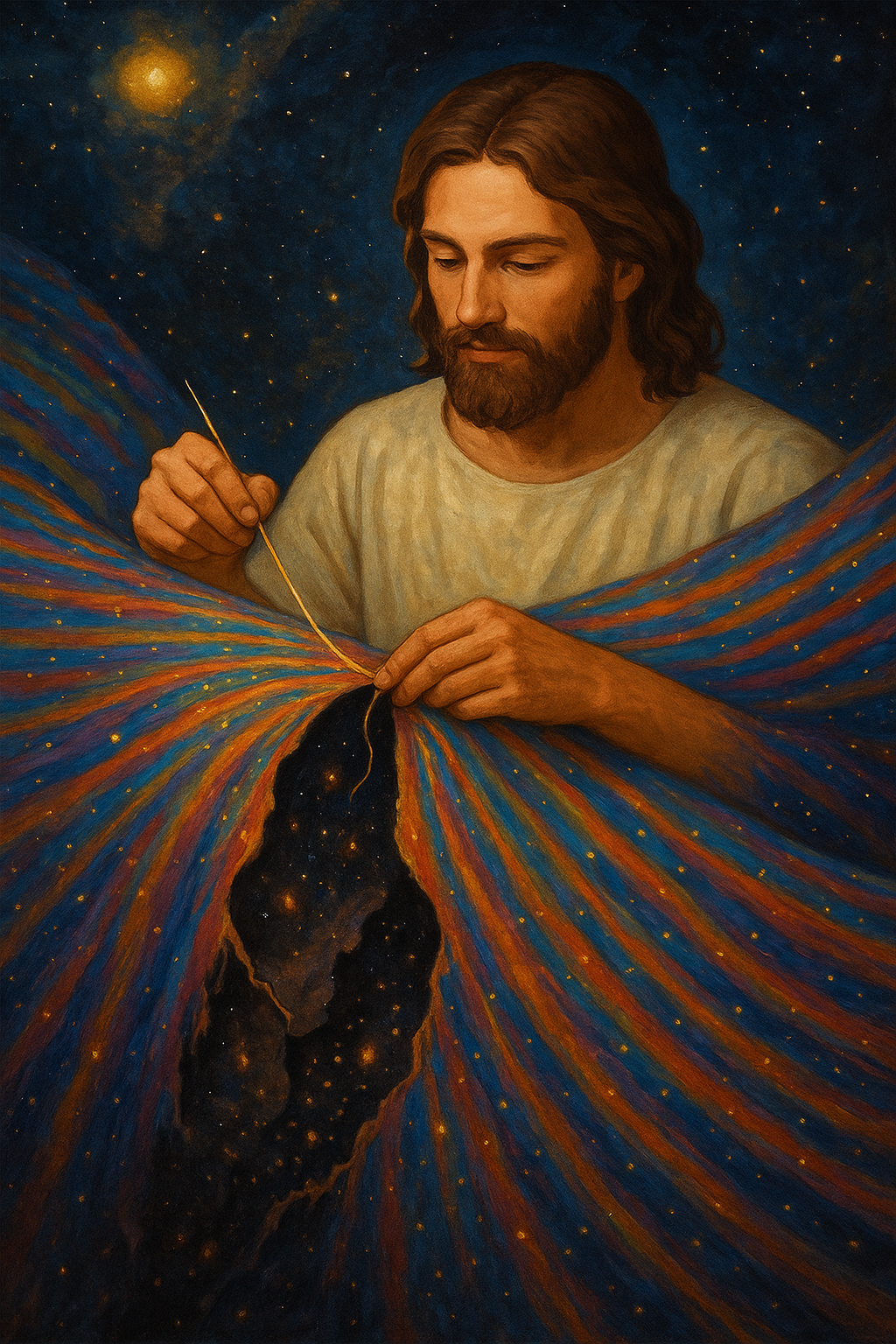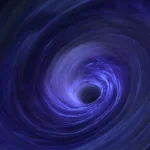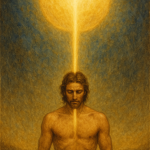I. From Shattering to Sacred Reconfiguration
Before our world took form, there was Olam HaTohu, the World of Chaos — the 36th iteration in the cosmic cycle of creation. In this primordial reality, the divine light — infinite and unbounded — poured into vessels that were rigid, proud, and isolated. Each Sefirah stood alone, unable to harmonize with the others. There was no interdependence, no relational structure. The result was inevitable: the vessels shattered, unable to contain the overwhelming influx of divine light. This set the stage for the transition to Olam HaTikkun, the World of Rectification.
This cosmic rupture scattered 288 primordial sparks (nitzotzot) of holiness into the lower realms, where they became encased in 320 shells known as Qlippoth. These shells — spiritual husks — are not simply evil by choice, but by nature: they are the unnatural byproducts of imbalance, isolation, and distortion. They are not the “other side” as an alternative good, but the ruptured echo of divine energy misaligned. Qlippoth are not necessary for free will; they are parasitic distortions, not counterparts to holiness. They feed on light but give none. Their existence is tolerated only so long as the sparks remain trapped within them.
As Genesis 1:2 hints in veiled code:
“The earth was formless and void, and darkness was upon the face of the deep.”
This “darkness” is not mere physical absence — it is metaphysical residue, a veil of spiritual entropy left in the wake of the collapse.
II. Why God Did Not Redeem Instantly
God, in His infinite wisdom, did not simply sweep away the fragments of Tohu or overwrite the chaos with a new divine command. Instead, He initiated Olam HaTikkun — the 37th world, the World of Repair. This was not a restart, but a redemption. But why not redeem with a snap of the divine fingers? Why allow millennia of history, struggle, suffering, and effort?
Because divine force obliterates. If God were to pour unfiltered infinite energy into creation again, the fragile vessels — now even more fractured — would not be healed, but utterly annihilated. The Qlippoth would not be cleansed; they would be incinerated. But that destruction would consume the sparks they contain. Redemption cannot be imposed from above without destroying the very fabric it seeks to restore.
Instead, God wove a path where healing flows through the brokenness. The shattered tapestry is not thrown away — it is stitched together thread by thread. This mending occurs through Tzimtzum (divine contraction), through the cautious reintroduction of light via vessels made flexible by relationship and humility. This is not a compromise — it is a divine innovation. The world is healed not by command, but by participation.
III. The Sefirotic Tree: From Isolation to Harmony
In Tikkun, the Sefirot no longer stand alone. They are arranged in a dynamic balance across three vertical pillars:
- Right Pillar: Chesed (lovingkindness), Netzach (eternity),
- Left Pillar: Gevurah (judgment), Hod (humility),
- Middle Pillar: Keter (crown), Da’at (knowledge), Tiferet (beauty), Yesod (foundation).
At the center lies Rachamim — compassion — not as a compromise between justice and mercy, but as the synthesis that makes harmony possible. The vessels are now elastic, interdependent, and wise. The light no longer floods them recklessly but flows in cycles, measured and relational. The Tree of Life is not a replacement but a re-creation — a system built for relationship, humility, and mutuality.
IV. Humanity: Fractured Vessel, Cosmic Agent
The first Adam was not merely a man but a cosmic vessel, the prototype of integrated consciousness. He embodied all souls, all Sefirot, and all potential. His mission was to raise the scattered sparks — not by dominion, but by sacred alignment: eating with blessing, speaking with integrity, working with intention. But Adam failed. He reached before his repair was complete. His fall shattered the microcosm just as Tohu shattered the macrocosm.
Yet from this deeper fracture came a deeper mission: birur — the act of sifting, refining, and reweaving the world. Each human being carries a shard of Adam’s soul and a portion of the 288 sparks. Every moment, every choice — a word spoken with love, food eaten with gratitude, suffering endured with dignity — becomes an act of elevation.
The blood of righteous deeds, the sacrifices of the just, and especially the blood of the suffering messiah, become the glue that begins to rebind the cosmos. Like cosmic stitches, these acts of repair thread the divine tapestry back into coherence — slowly, humbly, but surely.
V. The Twin Messiahs: Redeemer and Rebuilder
To guide this work to completion, God ordained two Messianic archetypes, not merely men but divine soul-patterns incarnate:
1. Mashiach ben Yosef: The Suffering Redeemer
Ben Yosef arises from the Sefirah of Yesod — the foundation that channels divine energy into the world. He is the hidden tzaddik, the one who descends into the densest Qlippoth, confronting heresy, exile, and despair head-on. His mission is not to remain untouched by suffering, but to descend into it while remaining holy — bearing the divine light into the deepest fractures.
He is Yosef in Egypt, Moses in exile, and in Christian Kabbalistic tradition, Yeshua (Jesus) on the cross — the one who suffers not in vain but as cosmic glue, holding the broken vessels together with his blood. His sinlessness is not for pride but preservation; he must retain his resonance with the Source to survive the descent.
He redeems the 160 most entangled husks — those that feed on despair, violence, and spiritual confusion. He dies, not as a victim, but as a seed. He makes resurrection possible — not just of bodies, but of worlds.
2. Mashiach ben David: The King and Unifier
Ben David arises from Malchut — the Sefirah of Presence, manifestation, and completion. Unlike Ben Yosef, he does not merely suffer — he indwells. He does not redeem from outside, but from within. He enters sin, doubt, and limitation not to fall, but to transfigure.
He is Yahweh incarnate, the One who becomes all so that all may return to the One. He lifts the final 144 sparks, dissolves the refined Qlippoth — spiritual pride, empty religion, counterfeit light — and completes the work. He is not crowned for conquest but for completion. Where Yosef bleeds, David builds.
Together, they are two aspects of one mission: descent and return, death and resurrection, exile and homecoming. They embody the name MaH (45), the divine name of becoming — the harmonization of infinite and finite, male and female, light and vessel.
VI. Evil Will Not Survive the Union
In the final state, evil will not endure — not because it will be forcefully destroyed, but because its illusion will be undone. Evil is not a positive force but a perversion of light — a twisting of divine energy separated from source and purpose. The Qlippoth exist only so long as sparks remain trapped within them. Once those sparks are released, the shells collapse.
Evil is not essential to freedom. Freedom flourishes in the presence of choice, not distortion. In the world to come, there will still be choice — but no seduction by falsehood. The soul will see clearly. The will shall be free because it knows truth.
VII. Toward the 38th World: Olam HaYichud
Olam HaTikkun is not the end. It is the gateway to Olam HaYichud — the 38th world, the World of Union. In that reality, all sparks are restored. The Tree of Life does not just channel light — it becomes light. The Sefirot no longer relate — they merge. The Name is One. The world is One. The Shekhinah, once exiled, now indwells openly. Samael and Lilith — archetypes of distortion — are not erased but purified, their root energies returned to the Source.
The Infinite and the Finite embrace. The tapestry glows not with repaired thread, but with unified fire. This is the final Yichud — the marriage of Creator and creation, the final blooming of the Tree of Life, and the world where love is the vessel strong enough to hold the Infinite Light.



